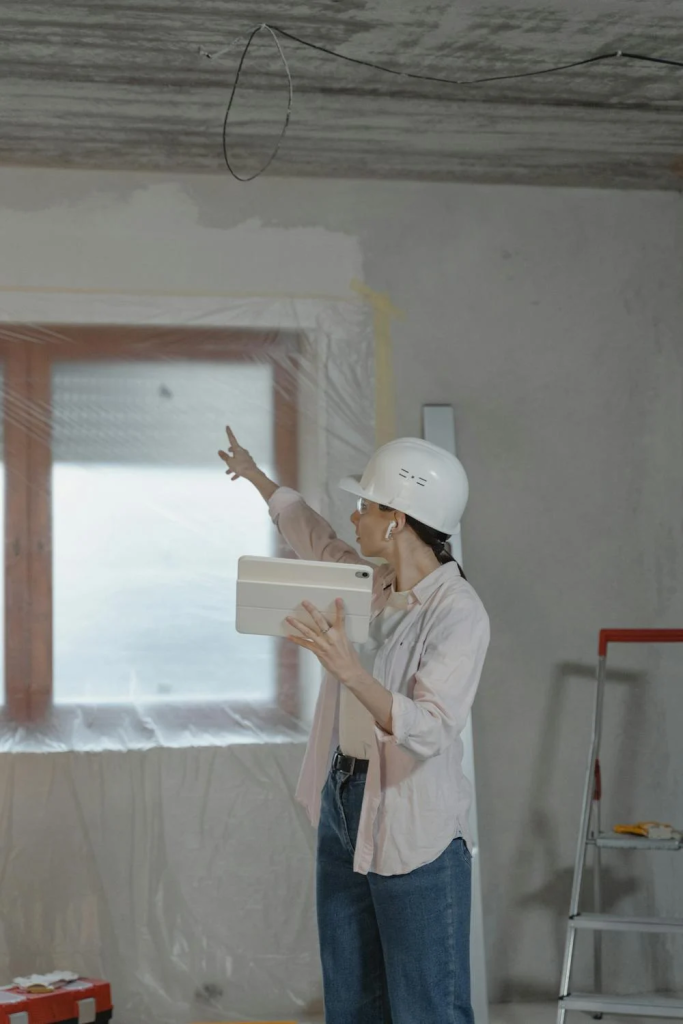Purchasing a property is a significant financial commitment, and ensuring that the property is in good condition is crucial. One of the most important steps in this process is the building inspection.

A thorough building inspection provides you with a detailed report on the property’s condition, highlighting any potential issues that may arise in the future. Learn more about the inspection process to understand what to expect and how it can benefit you.
The Building Inspection Process
Initial Steps Before The Inspection
Before the building inspector begins their evaluation, there are a few preparatory steps that take place:
- Pre-Inspection Discussion: The inspector will ask the buyer or agent about any concerns or specific areas to focus on.
- Scheduling: A time is set for the inspection, usually arranged between the buyer and inspector.
- Property Access: The buyer or agent must ensure that the inspector has full access to the property, including attic spaces, roof areas, and the exterior.
On-Site Visual Inspection
The inspector conducts a visual examination of both the interior and exterior of the property, which includes the following areas:
- Exterior walls and roof: Checking for cracks, damage, or potential leaks.
- Windows and doors: Ensuring they are functional, sealed, and not compromised by issues like rot or termites.
- Roof inspection: Inspecting roof tiles, guttering, downpipes, and identifying any signs of leaks or structural concerns.
- Foundation: Looking for any cracks or shifting in the foundation that could indicate structural issues.
Key Areas Inspected
- Structural Elements: Walls, floors, ceilings, and beams for any obvious signs of damage or instability.
- Plumbing and Electrical Systems: Checking the condition of the water supply, drainage, and electrical wiring to ensure there are no leaks or faults.
- Pest and Termite Inspection: Assessing the property for pest infestations, especially termites, which are a common problem in many Australian homes.
- Ventilation and Insulation: Evaluating the quality of airflow, insulation, and ventilation systems, including air vents and exhaust systems.
Common Issues Identified During A Building Inspection
Structural Defects
One of the most critical aspects of a building inspection is evaluating the structural integrity of the property. Common structural issues that may be found include:
- Cracks in foundation: These can indicate movement or settling of the structure.
- Sagging or warped beams: This may suggest a weakened structure that needs addressing.
- Uneven floors or walls: These can be signs of shifting foundations or settling over time.
Plumbing And Electrical Systems
The inspector will thoroughly evaluate the plumbing and electrical systems to ensure they are functioning safely. Potential issues may include:
- Leaky pipes: These could lead to water damage or mold.
- Blocked drains: This can be costly to fix and affect the property’s livability.
- Outdated electrical wiring: Older electrical systems may not meet modern safety standards and can pose fire risks.
Pest Infestations
Pests, especially termites, can cause severe damage to properties. The inspector will check for the following:
- Signs of termite activity: This includes damaged wood, mud tunnels, or hollow-sounding timber.
- Rodents or other pests: Evidence of droppings or nests within walls and ceilings.
Dampness And Water Damage
Water-related issues are common in older properties and can cause extensive damage if not addressed. The inspector will check for:
- Leaks in the roof or plumbing: Signs of moisture inside the property, such as water stains on walls or ceilings.
- Rising damp: This can cause issues with flooring, walls, and insulation.
- Mould or mildew: Visible signs of mould growth can indicate persistent moisture problems.
Roof And Gutter Issues
A thorough inspection of the roof and guttering system is essential for identifying potential problems. The inspector will look for:
- Damaged or missing roof tiles: These can lead to leaks and water damage.
- Blocked gutters and downpipes: This can cause water to pool and damage the property’s exterior or foundations.
Specialised Tools Used During A Building Inspection
Use Of Technology
In addition to a visual inspection, some inspectors may use advanced technology to gain a deeper understanding of potential problems. These tools include:
- Thermal imaging cameras: These can detect heat differences in walls or ceilings, helping identify hidden moisture or insulation issues.
- Moisture meters: Used to assess the levels of moisture in walls, floors, and ceilings.
- Ladders and scaffolding: For inspecting hard-to-reach areas like the roof or high exterior walls.
Why These Tools Matter
Using these specialised tools allows the inspector to uncover issues that are not visible to the naked eye. This is particularly helpful for detecting hidden leaks, dampness, or other issues that could lead to major problems if left unaddressed.
What Happens After The Building Inspection?
Review The Report
Once the inspection is complete, you will receive a detailed report outlining the inspector’s findings. This report will include:
- Photographs of identified issues: The inspector may include images of structural defects, plumbing issues, or pest damage.
- Descriptions of issues: Each problem will be described in detail, including the severity and potential risks.
- Recommendations for repairs: The report will also include suggestions for any repairs that need to be made to address identified issues.
Making An Informed Decision
After reviewing the report, you can decide how to proceed with the property purchase. Common options include:
- Negotiating repairs: If the inspector finds significant issues, you can request that the seller address them before you proceed with the purchase.
- Asking for a price reduction: If repairs are required, you may ask the seller to lower the price to cover the cost of fixing the issues.
- Walking away from the deal: If the inspection reveals major problems that are too costly to repair, you may decide not to purchase the property.
Possible Follow-Up Actions
If the inspector identifies significant concerns, you may need to:
- Seek further inspections: In some cases, a specialist, such as a pest control expert or structural engineer, may need to evaluate the issue in more detail.
- Obtain quotes for repairs: You may want to get estimates for repair costs to understand the financial impact before making a final decision.
Why Building Inspections Are Essential
1. Avoiding Hidden Costs
A building inspection helps to uncover hidden issues that could cost you thousands of dollars in repairs. Without an inspection, you may be buying a property with significant, unaddressed problems that could cause further damage or safety risks.
2. Peace Of Mind
A building inspection provides peace of mind, ensuring that you know exactly what you’re buying. Knowing the condition of the property allows you to make an informed decision and avoid unexpected surprises after you purchase the property.
3. Legal Protection
In some cases, a building inspection can also serve as legal protection. If issues arise after the sale that were not disclosed during the inspection, you may have grounds to seek compensation or request repairs under consumer protection laws.
Conclusion
A building inspection is a vital part of purchasing a property. It offers valuable insight into the condition of the property, identifies potential risks, and helps you make an informed decision. By understanding what to expect in a building inspection, you can ensure that the property you’re purchasing is safe, sound, and a good long-term investment.
Frequently Asked Questions
How Long Does A Building Inspection Take?
A standard building inspection typically takes between two and four hours, depending on the size of the property and its condition. Larger or more complex properties may take longer to inspect thoroughly.
What Should I Do If Major Issues Are Found?
If major issues are identified during the inspection, you can choose to negotiate repairs, ask for a price reduction, or walk away from the deal. If you decide to proceed with the purchase, you should factor in the costs of repairs into your budget.
Is A Building Inspection Required By Law In Australia?
In Australia, building inspections are not legally required but are highly recommended. Conducting an inspection helps ensure you understand the condition of the property and reduces the risk of buying a property with significant defects.
